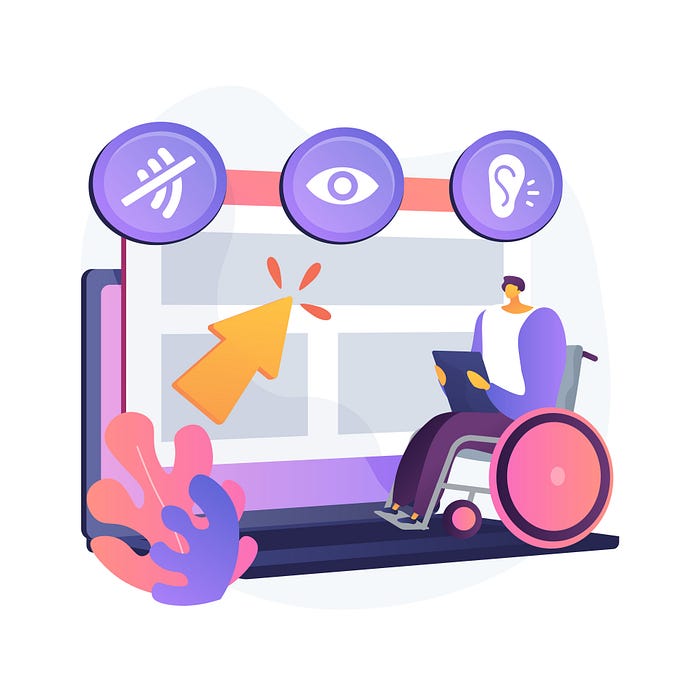How To Test Your UX Content for Inclusivity

Inclusive writing might seem like just another box to tick off your list of “right” things to do. But it’s much more than that. Inclusive UX content can be the difference between talking at your audience and talking to them.
As inclusive UX writing considers your audiences’ experiences, abilities, and cultural backgrounds, it results in products that transcend mere functionality to offer resonant experiences. However, spotting exclusivity in our content can be tough because we’re all somewhat biased.
So, how can you ensure your content is truly inclusive despite your biases?
Luckily, some practical strategies can help. In this article, we’ll explore some methods for testing your UX content to uncover hidden biases and ensure your message resonates with diverse audiences.
Let’s get started!
Before you begin, you need to:
Define your audience
Before creating UX content, you must clearly define your audience — Who are you trying to reach? What are their goals, motivations, interests, preferences, etc.? Consider demographic factors such as age, socio-economic status, gender, ethnicity, disabilities, and cultural background.
Being clear on who you’re writing for will get you started on the right foot.
Set inclusivity goals
You can’t gauge how inclusive your content is if there’s nothing to measure it against. So, you need to define what inclusivity means for you and your brand. Are you aiming for diverse representation, accessible formats, or neutral language? Also, think about the gaps and challenges you want to address. Are there ways your product is currently exclusive?
Having clear goals makes it easy to know when you’ve achieved them.
Testing your content
1. Self-evaluation
This involves examining your work through an inclusivity lens to identify strengths, weaknesses, and areas for improvement. There are a few ways you can do this:
- Check for bias: Think about how your biases and assumptions might influence the content you create. Are you letting your experiences, background, or perspectives rub off on your work? To create truly inclusive content, it’s important to recognize and put aside your biases.
- Review for diversity and representation: Examine your content to ensure it reflects diverse perspectives and experiences. Review the images, examples, and case studies in your content, do they represent various races, genders, ages, ethnicities, abilities, socio-economic backgrounds, etc.? If your content lacks diversity, look for alternative sources or perspectives to include in your work.
- Check for clarity: Review your content to identify any areas that might be unclear to readers. Watch out for confusing words, lengthy sentences, or jargon that might be difficult for some readers to understand.
2. Get feedback
While self-evaluation is valuable, getting feedback from others can help you gain different perspectives on your content. There are various methods and tools to gather feedback on the inclusivity of your content from your audience and stakeholders. Some common methods include surveys, polls, interviews, focus groups, reviews, and testimonials.
Always encourage honest feedback about the inclusivity of your content and be open to constructive criticism. Use this feedback to refine your content and make it more inclusive.
3. Leverage tools
You can also gauge the inclusivity of your content by using certain tools. One approach is to use tools that track your content’s performance and impact. Metrics and indicators like reach, conversion, engagement, retention, satisfaction, diversity, and conversion can tell you if your content resonates with your audience and aligns with your inclusivity goals. Tools that can do this include Google Analytics, Hotjar, Logrocket, and Buffer.
Also, tools like Hemingway Editor, Grammarly, Yoast, WebAIM, and WAVE can help ensure clarity, readability, grammar, SEO optimization, and accessibility in your content.
4. Test with assistive technologies
There are a few ways to check if your content is accessible to people who rely on assistive technologies:
- Recruit participants: The most effective approach is to recruit test participants who use assistive technologies. Observe them as they navigate your content and identify any usability issues specific to their needs.
- Accessibility simulators: Another helpful method is to use accessibility simulators. While these tools shouldn’t substitute user testing, they mimic the experience of using assistive technologies. This can help you identify potential usability issues. Examples include the Silktide screen reader simulator and VoiceOver simulator for Mac.
5. Cultural sensitivity testing
If your content is aimed at a global audience, it’s important to ensure it’s culturally sensitive. There are a couple of ways to do this:
- Get input from diverse team members: Have team members from different cultural backgrounds review your content to ensure it’s culturally appropriate. During the review session, ask them to consider how the language, imagery, and references might be perceived across cultures. This includes identifying idioms, slang terms, or humor that could be confusing or offensive.
- Recruit test participants globally: Recruit participants from the specific regions or cultures you’re aiming to reach. During testing sessions, observe how they interact with your content. Ask them to point out any areas they find confusing or insensitive. Also, pay attention to non-verbal cues that might indicate discomfort or misunderstanding.
Wrapping up
Just as test driving a car helps you gauge its performance on the road, testing your content for inclusivity allows you to see how well it resonates with diverse users. The insights you gain from inclusivity tests will help you pinpoint areas for improvement and refine your content strategy.
But remember, inclusivity isn’t a one-time fix; it’s a journey. So, keep iterating and evolving your approach to ensure that inclusivity remains at the heart of your content creation process. That way, you can drive meaningful connections with diverse users over the long haul.

